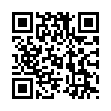|
This article is cited in 1 scientific paper (total in 1 paper)
Artificial Intelligence, Knowledge and Data Engineering
Minimal structure of the database for storing organisms' biodiversity data
A. M. Lyakh
A.O. Kovalevsky Institute of Biology of the Southern Seas of RAS (IBSS)
Abstract:
To date, a huge amount of data on organisms diversity has been accumulated. Databases help to store and use these data for scientific purposes. There exists several dozens of databases for storing biodiversity data that were described in publications. Each has an original structure which badly correlates with the structures of other databases. This complicates data exchange and the formation of big biodiversity data array.
The cause of this situation is the lack of the formal definitions of universal data components, which allow to build the database with any data on the diversity of organisms. The analysis of publications and author’s experience show that such universal components are present in the characteristics of any organisms. For example, it is an organism taxonomic name and a location where it was found. There are six such components and they answer to one of the six questions: what, where, when, who, where from and where to. What determines the name of an organism; where determines the location where it was found; when indicates the date of finding; who enumerates the persons, who found and analyzed an organism; where from refers to publications, where data about an organism are extracted or published; where to shows in which biological collection an organism is put in.
Each component corresponds to a separate database table. These tables are linked to the table with data about organism (individual) and they are not linked with each other. Attributes of the links between the organism table and the component tables are stored in intermediate tables. They are used, for example, to store bibliographic facts, descriptions of collection items or geographical points. They also act as docking stations to which tables with any other information are attached.
The creation of any database about the diversity of living organisms begins with the definition of the table of organism specimens. It must be used even if there is no explicit data on organisms. In that case virtual organisms should be introduced and the other components should be linked with them by means of intermediate tables. The latter are docked to other data. Minimal structures of all the tables, links between them and examples of databases construction are described in the work.
Keywords:
data components, organism data, geographical point, taxonomic name, bibliographic record, biological collection, collection item, metadata.
Received: 06.06.2020
Citation:
A. M. Lyakh, “Minimal structure of the database for storing organisms' biodiversity data”, Tr. SPIIRAN, 19:4 (2020), 855–879
Linking options:
https://www.mathnet.ru/eng/trspy1119 https://www.mathnet.ru/eng/trspy/v19/i4/p855
|

| Statistics & downloads: |
| Abstract page: | 74 | | Full-text PDF : | 33 |
|




 Contact us:
Contact us: Terms of Use
Terms of Use
 Registration to the website
Registration to the website Logotypes
Logotypes








 Citation in format
Citation in format 
